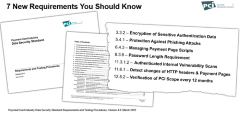

Resources
A Guide to Payment Strategy Optimization: 5 Payment Strategies to Drive Subscription Growth
Download Guide
In today’s competitive subscription market, implementing an effective payment strategy is crucial for driving growth and enhancing customer satisfaction. By focusing on payment strategy optimization, businesses can reduce friction during checkout, improve the customer experience, and boost overall revenue. This article explores five key payment strategies to achieve these goals.
Strategy 1: Offer Multiple Payment Options
A diverse payment strategy is essential for catering to various customer preferences. By providing multiple payment options, such as credit cards, digital wallets, and ACH payments, businesses can enhance convenience and increase conversion rates. This approach not only improves customer satisfaction but also supports overall payment strategy optimization.
Fact or Friction?
When you don’t offer multiple payment methods, you lose out on customers.
Fact: According to a survey by Paysafe, 54% of consumers are more likely to shop with businesses that offer a variety of payment methods. Catering to diverse payment preferences increases customer convenience and satisfaction, reducing churn rates.
Strategy 2: Secure Customer Payments with Tokens
The second of five payment strategies to drive subscription growth is to secure payments with tokens. By accepting payments, you are automatically in the business of data protection. Every transaction is accompanied by sensitive financial information — credit card details, bank account numbers, personal identification data, etc. — and customers trust you to protect their data.
Compromised data can result in:
- Reputational damage
- Reduced customer loyalty
- Loss of sales
- Poor financial performance
One way to help with data security is to ensure you are tokenizing transactions. Payment tokenization replaces sensitive payment card data, such as credit card numbers, with unique, randomly generated characters called a token. These tokens are meaningless to hackers if intercepted, significantly reducing the risk of data breaches and fraud. Even if a token is compromised, it cannot be used to make unauthorized transactions.
When a user or application needs the correct data, the tokenization system looks up the token value and retrieves the original value from the vault it’s stored in. This allows customers to perform multiple, repeated or recurring transactions without needing to enter their payment information for each purchase.
For tokenization to work, you need a payment gateway to store sensitive data that allows for the random token to be generated and satisfies PCI Security Standards for credit card processors.
The PCI Data Security Standard, commonly referred to as PCI DSS, is a set of security requirements and best practices developed for organizations that handle credit card information. Compliance with the standard contributes to fraud prevention and chargeback reduction because you can prove you have taken protective measures when it comes to your customer’s financial data.
It’s also a great way to show your customers you are securing their data. A report by CyberSource and Trustwave found that 58% of consumers feel more confident about buying from a business that displays a security seal indicating PCI compliance.
Come March of 2025, all PCI DSS Version 4 standards must be in place. This framework of best practices — including encryption, updated strong passwords, authentication methods and more — safeguards cardholder data and plays a crucial role in mitigating fraud and chargebacks.
The Big Impact of Strong Security
- Increased convenience
- Improved customer satisfaction
- Higher conversion rates
- Simplified checkout experience
Implementing payment security measures is a fundamental aspect of safeguarding sensitive customer information. In addition to tokenization and complying with PCI-DSS, implementing 3D Secure and Strong Customer Authentication are also effective in reducing the risk of unauthorized access and fraudulent activities.
Fact or Friction: Studies have shown that trust and security do not play significant roles in consumer purchasing decisions.
Friction: 77% of consumers are concerned about the security of their personal information when making online purchases, according to a GlobalSign survey.
Strategy 3: Protect Against Payment Fraud
Incorporating robust security measures into your payment strategy is vital for building customer trust and safeguarding data. Implementing tools like tokenization, PCI DSS compliance, and 3D Secure can prevent unauthorized access and fraudulent activities.
While it’s smart to aim for a frictionless experience, sometimes, a little friction is a good thing. Minor friction indicates you have put measures in place to safeguard customers’ payment data. This is where fraud detection comes into play. Fraud detection is good for several reasons. It indicates to customers that you’re invested in protecting their data — and doing so builds trust. Plus, as a business, it protects you from carding attacks, fraudulent transactions and chargebacks.
With any fraud prevention measures, there’s a balance between providing an optimal checkout experience and protecting your bottom line. Balancing security with user experience is key to effective payment strategy optimization.
Strike the Balance of Healthy Friction
- Implement robust security protocols, such as tokenization, PCI DSS compliance and 3D Secure to safeguard payment data and prevent unauthorized access.
- Monitor transactions for suspicious activity and employ fraud detection tools to minimize the risk of fraudulent transactions.
- Maintain a user-friendly checkout experience that doesn’t compromise efficiency or frustrate customers — which can lead to abandoned transactions.
- Measure business outcomes until they are optimal with the payment security in place, and regularly assess whether payment security is resulting in more false declines.
Fact or Friction?
Around 60% of subscription-based businesses have observed a rise in online payment fraud over the past 12 months.
Fact: According to NoFraud, ~60% of subscription merchants have seen an increase in account takeovers, with significant rises in high-level threat incidents.
Strategy 4: Defeat the Declines
An optimized payment strategy includes measures to reduce payment declines. Ensuring recurring payments process successfully and effectively managing and addressing declined payments is crucial for maintaining a steady and reliable revenue stream. Ultimately, all businesses face the burden of keeping decline rates low. In addition to losing revenue, declines hurt businesses’ merchant scores.
Common Reasons for Decline:
- Insufficient funds
- Expired cards
- Incorrect card details
- Other issues in the payment processing system
For subscription or recurring revenue businesses, a declined payment may lead to a disruption in service or access for the customer. On the bright side, each declined transaction represents an opportunity for insight. There are various solutions available that help with declines. The first one is Account Updater. Account Updater ensures steady revenue by helping you avoid failed transactions or gaps in services provided to your customers. This service routinely queries the banks to see if there’s updated account data and if there is, the token is updated. It eliminates a point of friction and is much more consistent than repeatedly requesting customers for a new card number.
Another solution is Customer Payment Recovery. When added to your payment gateway, customers can complete a purchase when their payment is declined. Instead of a payment failure message, customers are presented with the option to complete the purchase and be charged at a later stage.
Lastly, look at your decline codes so you can develop an informed retry strategy.
Exploring any decline recovery solution is crucial, especially when considering customer lifetime value. For instance, with a $39 subscription and a 24-month customer lifecycle, one failed payment could cost you $936. This figure doesn’t even include the cost of acquisition. To summarize, subscription-based businesses should aim to:
- Employ robust revenue recovery strategies and best practices to be successful and ensure ongoing revenue flow.
- Ensure failed credit card payments are resolved before a subscriber loses access to the product or service to avoid lost customers.
- Comply with Visa’s Excessive Reattempts to avoid excessive reattempt fees, demonstrate a commitment to best practices and maintain a positive relationship with Visa.
- Understand and address the reasons behind failed payments to recover revenue, enhance customer satisfaction and optimize operational efficiency.
- Work with a provider who has mapped decline codes to optimize retry strategies, limit declines, avoid penalties, improve customer experiences and maximize your revenue.
Fact or Friction?
30–40% of churn is due to payment declines.Fact: According to a study done by Forrester and Recurly,
65% of respondents said they experienced a decrease in lifetime customer value
61% of respondents said they lost revenue
31% said they experienced operational or technical costs to recover declined payments
Strategy 5: Give Customers Subscription Flexibility
Subscription-based businesses thrive on customer loyalty and retention. Offering an easy way to cancel or pause subscriptions is essential to fostering trust and satisfaction among subscribers. When customers find it difficult to cancel their subscriptions, they may feel trapped, leading to frustration and negative perceptions of the brand.
Providing straightforward options for canceling or pausing subscriptions demonstrates respect for customer autonomy and helps build a positive relationship with the brand. If consumers are confident, they can easily cancel subscriptions, they might be more likely to subscribe in the first place.
By implementing easy cancellation and pausing options, subscription-based businesses can better cater to individual customer needs, ultimately encouraging a longer and more positive engagement with the service. This approach not only helps in retaining customers, but it also enhances the overall brand reputation, leading to increased customer satisfaction and loyalty over time. Providing these options reflects a customer-centric approach, which is crucial in today’s competitive subscription market.
Fact or Friction?
Customers who are allowed to pause their subscriptions are more likely to return to the service compared to those who cancel outright.Fact: Customers who pause their subscriptions are more likely to return to the service, as pausing indicates a temporary issue rather than a desire to permanently leave.
(Zuora’s Subscription economy Index 2020)
Conclusion: The Payway Advantage
Implementing these five payment strategies can significantly contribute to subscription growth and customer satisfaction. By focusing on payment strategy optimization, businesses can create a frictionless payment experience that meets customer expectations and drives long-term success. Growing your subscription-based business is simple with the right provider. At Payway, we make sure you have the tools you need to simplify and accelerate transaction processing. With solutions designed to support your customers and your bottom line, you’ll be prepared to reduce friction and capture more value from your business.
Payments and Beyond:
- Ensure customers have flexibility at checkout: Payway accepts multiple payment options including, credit/debit cards, digital wallets and ACH payments.
- Secure payment information: Payway includes complimentary tokenization to both protect cardholder data and speed up recurring payments.
- Recover up to 15% of revenue: With Customer Payment Recovery, you’ll recover lost revenue due to payment declines.
- Reduce customer churn: Payway’s Account Updater automatically queries banks and card companies to ensure data is correct for future recurring payments. This helps ensure steady revenue and prevent gaps in services provided to your customers.
- Protect against fraud and chargebacks: Features like 3D Secure and Strong Customer Authentication help businesses mitigate unauthorized transactions and combat fraud.
- Access support at any moment: Payway’s 24/7 concierge support to ensure you and your customers questions are always answered no matter how big or small your business.
Ready to take the friction out of your recurring payment processes? Start making the most of your payment gateway. Contact on our team at: payway.com/contact.


